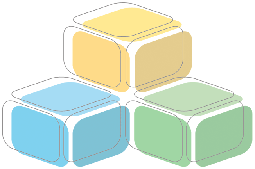






|

|




|
|
| Project Overview | |
OverviewPeople are starting to use the Internet, not only in business but in their daily life as well. The Internet for business needs to be a homogeneous and logical information space. On the other hand, the Internet for everyday life should be a space that is heterogeneous and contains rich information reflecting cultural characteristics of a local area. For example, patients suffering from high blood pressure do not require the Internet as a worldwide network. Instead, they need the Internet as a space that encompasses everyday life information of the surrounding vicinities. Digital cities, accumulating the local information through a new media, will provide a social information infrastructure to community networks. The objective of this project is to create digital cities as an infrastructure used and participated by all people, including the handicapped and the aged. However, the high cost of developing systems specifically for the handicapped and the aged, in return, burdens them. Therefore, it is necessary to design the Digital City from the beginning so that everyone can use this information space without any barriers. The universal design of digital cities -useable for all people- is indispensable for creating the information space for daily life. In this project, we will develop basic technologies for the universal design, subject to 'sending information', 'receiving information', and 'participation'. |
TechnologiesDigital Cities have used technologies such as geological information systems, virtual space and mobile computing. In our project, we carry out basic researches into the information infrastructure called perceptional information infrastructure (PII) and the software called social agents. In PII, we create an omni-directional vision network. It models the function of environmental static and human active structures to accumulate information actively. We also construct a new technology that is able to record and to search a large quantity of time series data. In the research of social agents, we design a communication environment for agents using a 3D virtual space. Within a virtual meeting space, we examine the effects of the agent's utterance and behaviors in the society, and evaluate the agent's social roles. The research of media adaptation bridges the gap between information utilized by the social agent and the information accumulated through PII. It examines the relations between various media expressions in a city and human's interpretations. Then, the technology transfers the accumulated information in accordance with the user's knowledge and sensitivity. The result of these fundamental researches is applied to security, learning about the natural environment by experience, crisis management, and so on. The field experiments are developed on the stage of real cities, which includes Kyoto. |
OrganizationsThe Universal Design of Digital City is a five-year project established in July 2000 by our project director Toru Ishida, under the Core Research for Evolutional Science and Technology (CREST) of the Japan Science and Technology Corporation (JST). This project is promoted by JST Digital City Research Center located in center Kyoto, collaborating primarily with the Department of Social Informaticsat Kyoto University, Dept. Adaptive Machine Systems at Osaka University, NTT Communication Science Laboratories, Advanced Software Technology & Mechatronics Research Institute of Kyoto (ASTEM), and Advanved Telecommunications Research International (ATRI). The domestic cooperation also includes the Department of Architecture at Kyoto University and the Digital City Kyoto Experiment Forum. The international cooperation is underway with Stanford University, California University, Paris 6 University and Shanghai JiaoTong University. (Main Organizations of project) |
|
| Last updated: May 31, 2001 |